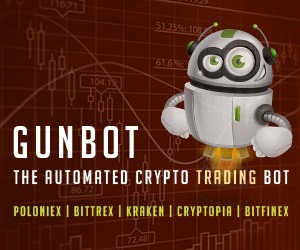While Bitcoin was the first digital currency, Satoshi Nakamoto envisioned in 2009, all other cryptocurrencies that came after Bitcoin were termed altcoins. In other words, an altcoin or alternative coin is any currency other than Bitcoin. However, as the market is expanding further, this definition presents a very broad picture of those thousands of ‘altcoins’ floating in the market. The recent definition has started excluding the top 10 from the altcoin list.
Altcoins are highly correlated to Bitcoin : Altcoins are highly correlated to Bitcoin. This means that any major price movement in Bitcoin causes the altcoins to be impacted even more because Bitcoin has the largest market share, which accords it a lot of influence and control in the market. Another reason for this high correlation is that altcoin prices are measured in Bitcoin. Most of the buyers purchase Bitcoin first in exchange for fiat and then exchange their Bitcoin for other altcoins. This relationship is symbiotic and has altcoin prices tied to Bitcoin price movements.
Each altcoin is tied to a network : Each altcoin is tied to a particular blockchain network or platform, or project and performs some specific functions. For instance, Ether is the native token of the Ethereum platform and can be used by network participants to pay for gas fees and for using other services on the network. Other altcoins may serve purposes like governance, utility, or payment.
How do Altcoins work? Altcoins use the same underlying technology as Bitcoin – blockchain. Blockchain provides an immutable, distributed ledger to capture all the transaction history and ensure that transactions are legitimate. However, each altcoin is designed to achieve specific goals or is developed as an improvement over the previous coins.
Types of Altcoins: While altcoins can be differentiated on the basis of numerous parameters, let’s demarcate them on the basis of the function they provide. There are several types of altcoins in the crypto market based on their use cases. Some of these include:
Native coins are used as digital currencies to exchange values between parties within a particular platform or network. These native coins fuel the internal economy of the platform or ecosystem. Ethereum, Cardano, Solana, Filecoin, Internet Computer, and Tron are some examples.
Tokens: Tokens represent a unit of value on an existing blockchain, i.e., they do not have a separate blockchain of which they are the native tokens. For instance, the Chainlink platform is a layer-2 scaling solution built on the Ethereum network. LINK is the token that is used to pay for using Chainlink services. There are several kinds of tokens:
Payment tokens are used as digital currencies to exchange values between parties. Ether is a prominent altcoin that acts as a payment token. Litecoin, Dash, and Bitcoin Cash are other examples.
Security tokens are investment assets that use tokenization to trade real-life assets by modernizing them into units over a blockchain. The distinction between a security token and cryptocurrency is that while the latter requires its blockchain to trade on, the former can run on any blockchain like Ethereum. Popular security tokens are Sia Funds (SC), Science Blockchain (SCI), and Blockchain Capital (BCAP).
Governance tokens allow their holders to influence the decisions taken on the network. The token holders can vote in favor or against the proposal of starting a new project, making changes in a project, or even the working of the network as a whole. Apecoin (APE), Maker (MKR), Aave (AAVE), and Decred (DCR) are some examples of governance tokens.
Stablecoins bring stability to the highly volatile cryptocurrencies by pegging the price of cryptocurrencies to fiat money, other cryptocurrencies, industrial metals, or precious metals. The purpose of stablecoin is to maintain a stable value over time. In case the holders of stablecoins want to cash out, the above-stated asset value acts as a reserve. Notable stablecoins are Tether (USDT), USD Coin (USDC), and Binance USD (BUSD).
Each of the altcoins mentioned above can be bought, sold, and traded on a crypto exchange in exchange for fiat, stablecoin, BTC, or another crypto. While there are a number of crypto exchanges in India from where you can buy altcoins, WazirX is a trading platform that ensures the highest levels of security, including KYC checks and 2FA authentication, high liquidity, and fast matching engine, and a user-friendly interface for both beginners and seasoned investors. It lists over 200 altcoins.
What are the top Altcoins to Keep an Eye On?
While we talked in depth about altcoins, you may be eager to know more about which altcoins present a good investment or trading opportunity in the crypto market. Buyers should consider doing ample market research and acclimate themselves to the project or platform they seek to invest in.
Top altcoins like Cardano, Solana, XRP, Chainlink, Polygon, Binance, Polkadot, etc., are always a good bet as these coins have proved their mettle time and again. As web3 opportunities are coming knocking at our doors, besides Ethereum and scaling solutions, decentralized platforms like Compound, MakerDAO, Dai, and Avalanche will continue to hold relevance. Metaverse and gaming tokens like Decentraland, The Sandbox, Axie Infinity, Bloktopia ApeCoin, etc., are some good choices for buyers seeking altcoin investments. Altcoins are volatile and more prone to market fluctuations. Investors should consider the risk before seeking investments in altcoins.
Disclaimer : Cryptos are unregulated virtual assets, not a legal tender and subject to market risks. The views and opinions expressed in the article are those of the author(s) and don’t represent any investment advice or WazirX’s official position.
Also read | What is Bitcoin?
Related





